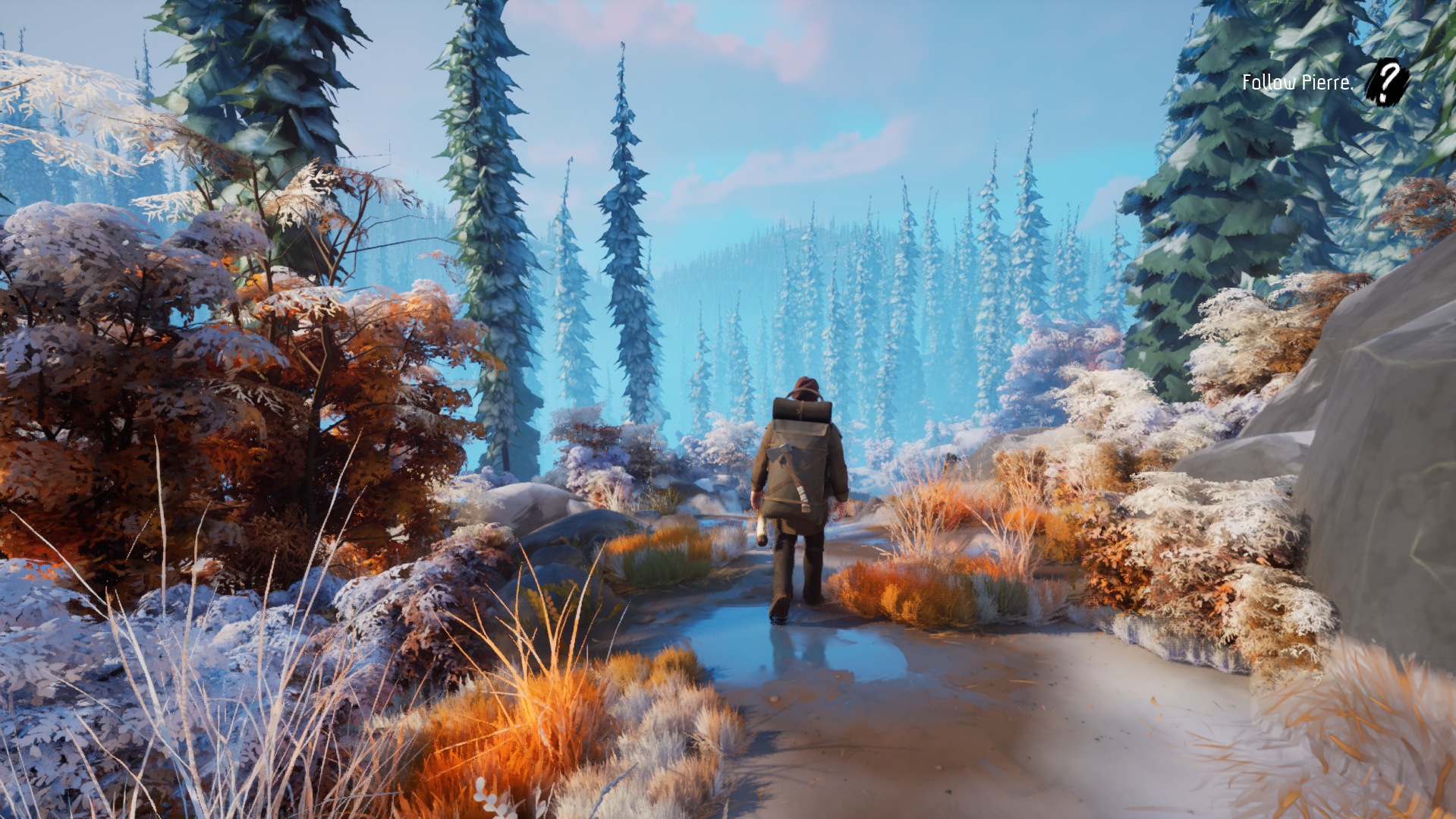We all need a dash of educational value in our video games every now and then. As I wandered through the lush, sun-blushed forest of Two Falls, a rousing piece of music in my ears, and my companion Pierre musing on a tale about over-abundant hunting, I found it difficult not be swept up in its themes of companionship, the nature of change and impact of colonialism on indigenous cultures. I was initially unsure of my first couple of hours with the game, but as the story progresses, it picks up momentum, and before you know it, it’s four hours later, and you’re rolling credits.
Two Falls (Nishu Takuatshina) follows the mould of interactive fiction gems such as Firewatch and Road 96, where the narrative takes centre stage. Developed by Unreliable Narrators in collaboration with indigenous creators, it seeks to spread awareness and introspection for the 17th century’s conflict of land and the displacement of people. It sounds heavy, I know, but let’s travel through the forest together and uncover what makes Two Falls a story worth your contemplation.
Two Is The Loneliest Number
Two Falls follows two protagonists. The first is a headstrong French woman named Jeanne, who’s just arrived in the Canadian wilderness after travelling across the Atlantic, and subsequently ended up shipwrecked and stranded. Fear not, for her trusty canine companion Capitaine is alongside her. The second perspective is that of Maikan, an indigenous Innu hunter who has discovered his home forest suffering from a rageful spirit spurned by human treatment of nature.
At the outset, I found Maikan’s story to be more compelling, owing to the unique perspective he translates to the player. Beliefs about nature, the treatment of wildlife and respect for the world around him give way to anger at outsiders, something he – and you as the player – must grapple with. Jeanne’s by comparison, is less interesting from the start, as it’s simply her struggle to survive a foreign land with few survival skills. However, Two Falls supplements her personality with a thematic focus on faith and religion.
Across the game’s seven chapters, you’ll make choices for how both characters interact with the world and others around them. Does Maikan remain contemplative and untrusting of those not from his community, or will Jeanne become increasingly dogmatic or liberated in her search for faith in challenging circumstances? The dialogue and ending will adjust according to your choices, creating compelling arcs for both.
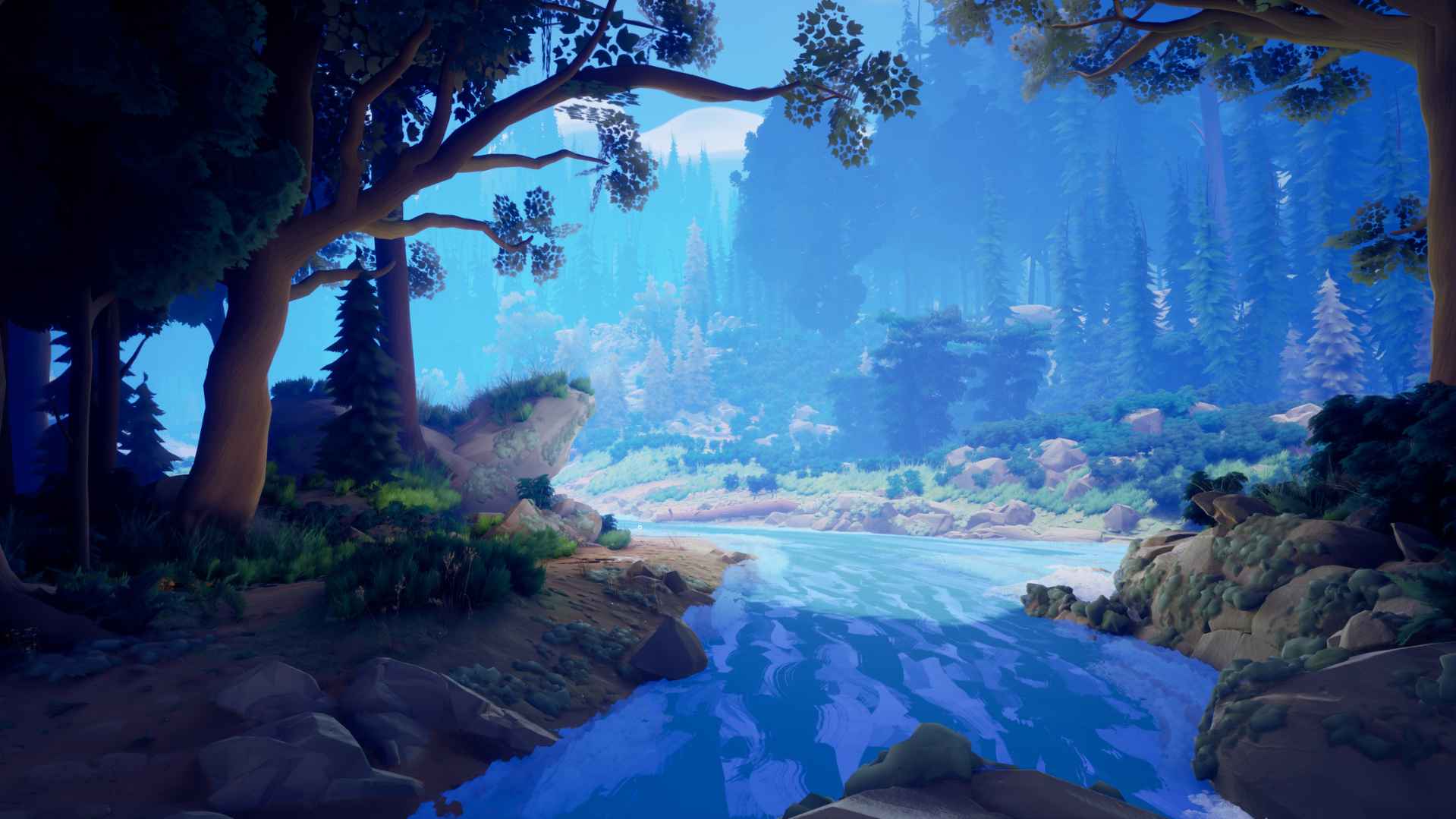
Taking The Falls
The majority of Two Falls’ appeal is based on its narrative underpinnings. Supplemented with strong supporting characters like Pierre, a rogue hunter who’s simultaneously aloof yet caring, I quickly found myself invested in the yarn being spun. However, the primary antagonist you’ll encounter is so boldly and explicitly bad that I could predict his arc from the first line of dialogue he spoke. He’s a tarnished fur in an otherwise splendid cast of characters and motivations, though his role does move the themes to their conclusions effectively.
All of this is supported by an in-depth game codex which details both the historical background of flora, fauna, history, locations and characters in the game world. Moreover, it reveals Maikan’s and Jeanne’s understanding of these entries from their perspective. I’m not often one for reading text entries that are appendices to the main game, but Two Falls does an excellent job at contextualising the world from these people’s perspectives, while also providing an educational lens to proceedings. Who knew learning and video games could go hand-in-hand so well?
Which brings me neatly to my main takeaway from Two Falls. It’s a video game with plenty to say and a lot of messages it wants to convey. Some are explored with more depth and nuance than others, but on the whole, I felt I was learning throughout my time with it. I wanted to know more about Pierre beyond his standoffish demeanour, learn more about the Innu people and have the opportunity to reflect on the very human impact of colonial intrusion. In this, Two Falls hits its stride and very much succeeds.
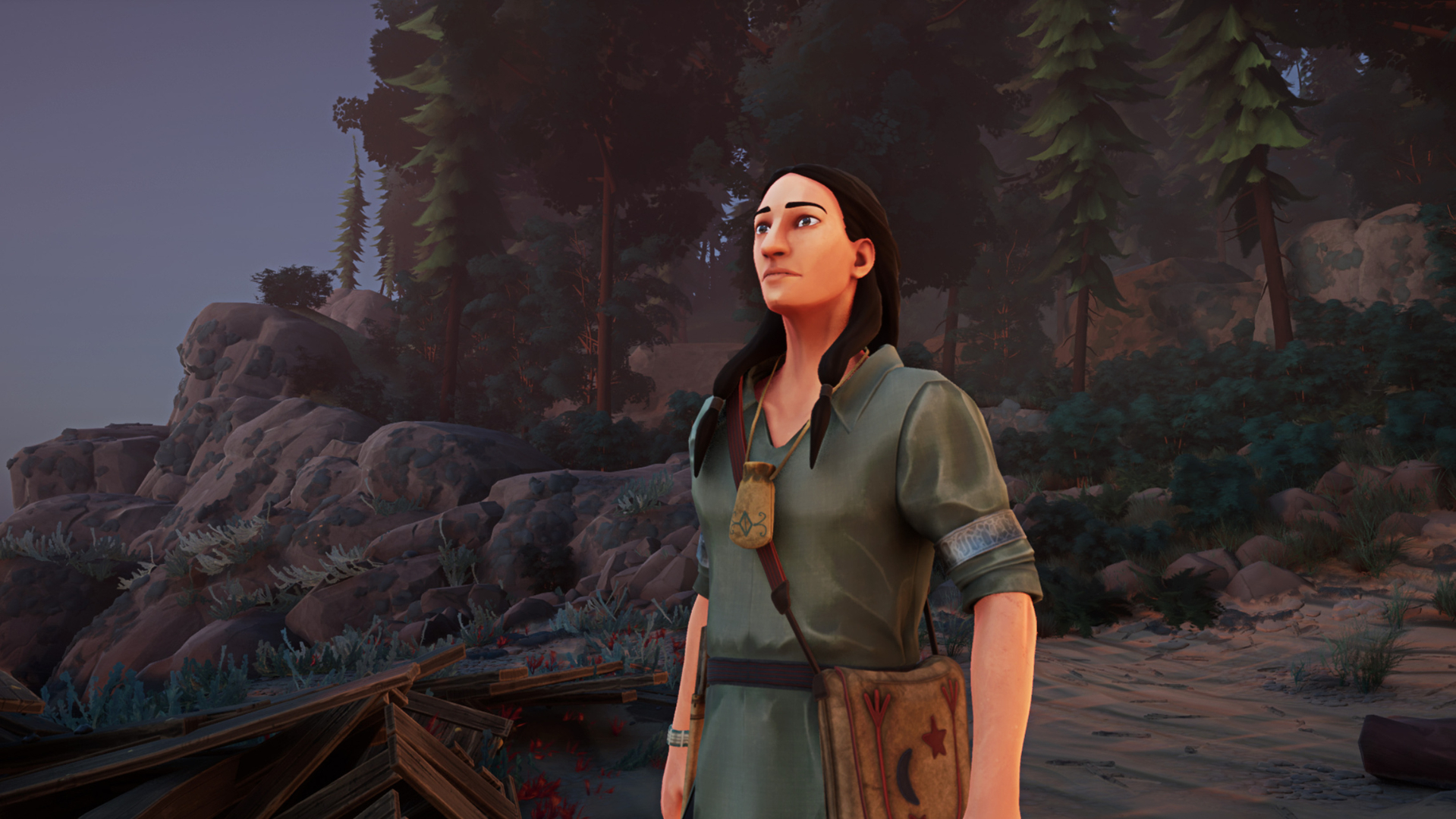
Maikan You Not
As I mentioned earlier, Two Falls is roughly four hours in length. For the most part, it fits within the walking simulator genre, as you walk or jog around linear spaces, interacting with objects, before watching a cutscene or engaging in dialogue. You’ll make choices on how your characters respond to others, and occasionally do a chase sequence, which involves holding sprint and running forward. Hardly the height of innovation.
In fairness, it doesn’t need to be much more than this. I’m partial to a good walking simulator, so the ease with which you can play the game feels fine for me. However, compared to something like Firewatch or SOMA, where the walking and talking is punctuated with a bit more hearty bark, Two Falls is more of a skinny branch. Like I said, this isn’t a detraction from the game for me, but might be a bit lean for others who expect a bit more interaction with their game spaces.
You can pet Capitaine and give him a bone on one level, though, so you know, game of the year.
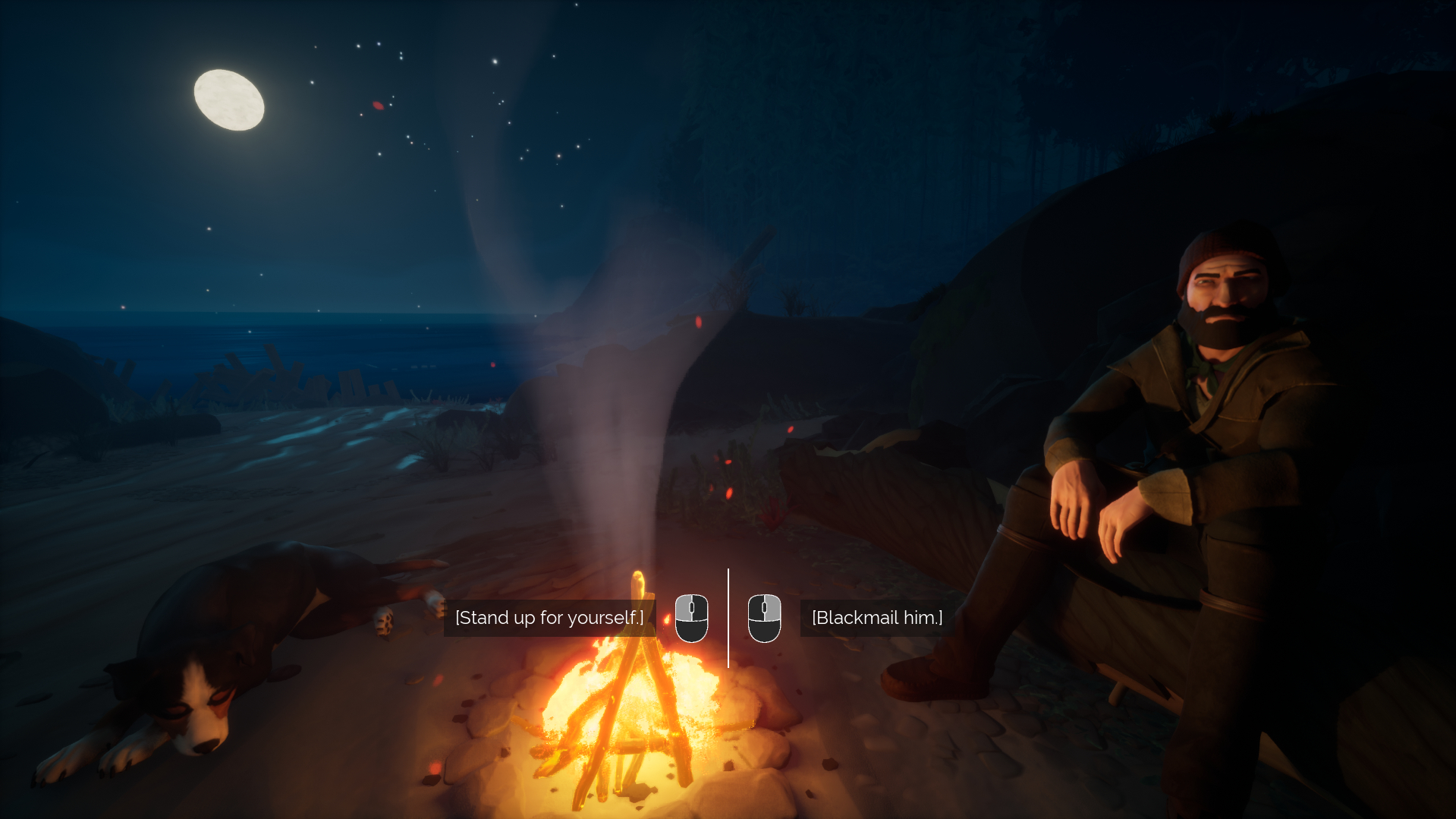
Falling For You
The authenticity for 17th-century Canada doesn’t stop at the narrative level either, it’s represented in the visuals. The art style for Two Falls is very reminiscent of your Firewatchs’, Road 96’s, and even your Life is Strange’s. The mix of locations, from snow-covered meadows and mountains, to dark, intimidating creeks permeated with wolves’ howls, to flowing waterfalls and developing fauna, all look and sound wonderful.
There are sections where a lack of textures makes objects appear moulded out of clay, if the crafter were an amateur, but these are fairly rare. It’s a style over raw power vibe, but the use of contrast and saturation really works wonders for capturing the feel of rural Canadian wilderness. Moreover, the juxtaposition of man-made structures amongst the serenity of nature hammers home the consequence of human expansion and intervention.
Aside from the small handful of main characters, whose character models are excellently crafted, some of the faces for NPCs or side characters are… unnerving… to say the least. A band of aggressive Frenchmen you meet in one of the chapters have some of the creepiest faces I’ve seen in a video game, and I’m not sure that was by design. Minor gripe aside, Two Falls looks and sounds brilliant, evoking that whimsical sense of discovery only this kind of art style can inspire.
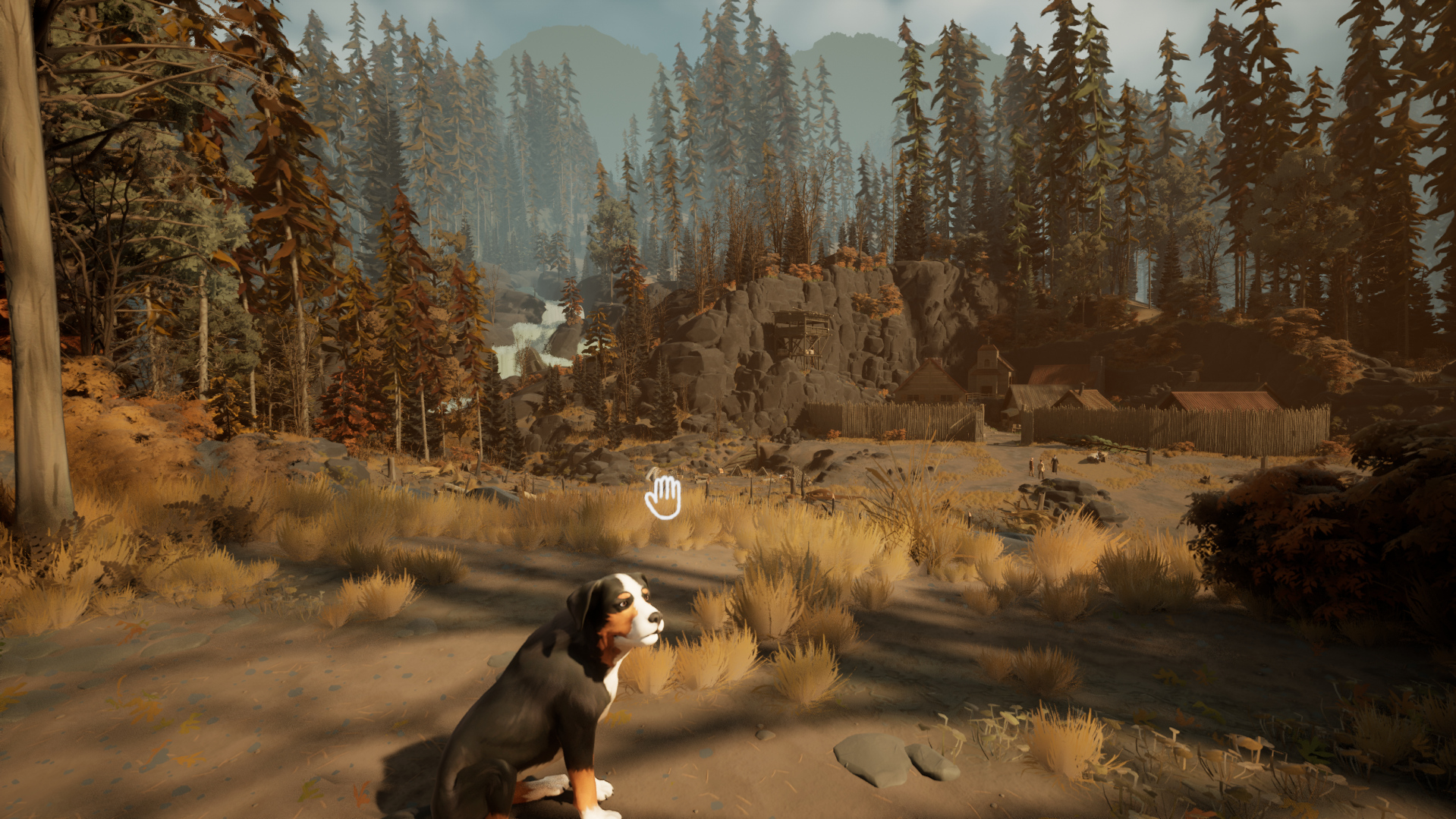
Two Can Play At That Game
Two Falls (Nishu Takuatshina) is another example of the indie space in video games expanding the potential of what the medium can explore and inspire. A tale that thoughtfully sparks reflection on the nature of differences in people and how those bridges can be both abused and built. An art style that screams into the trees with its serenity and haunting obscurity. If you love games like Firewatch or Road 96, I’m positively certain you’ll enjoy this one too.
While it’s somewhat limited in its gameplay variety and structure, and has the odd visual hiccup here and there, those accustomed to the walking simulator genre will feel right at home with these concessions. More than anything, however, I came away from my four hours with it contemplative and feeling like my understanding had been expanded. Very few games can pull that off successfully, but Two Falls is one of the rare few.
Two Falls (Nishu Takuatshina) is available May 2nd on PlayStation 5 (review platform), Xbox Series X|S and PC via Steam.
Developer: Unreliable Narrators
Publisher: Unreliable Narrators, Indie Asylum
Disclaimer: In order to complete this review, we were provided with a promotional copy of the game. For our full review policy, please go here.
If you enjoyed this article or any more of our content, please consider our Patreon.
Make sure to follow Finger Guns on our social channels. Twitter, Facebook, Twitch, Spotify or Apple Podcasts – to keep up to date on our news, reviews and features
